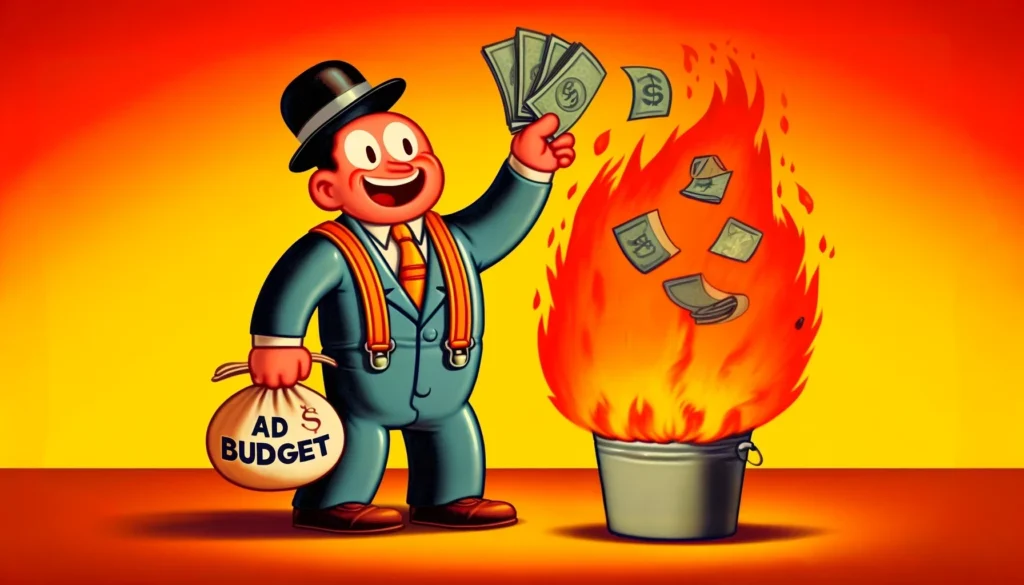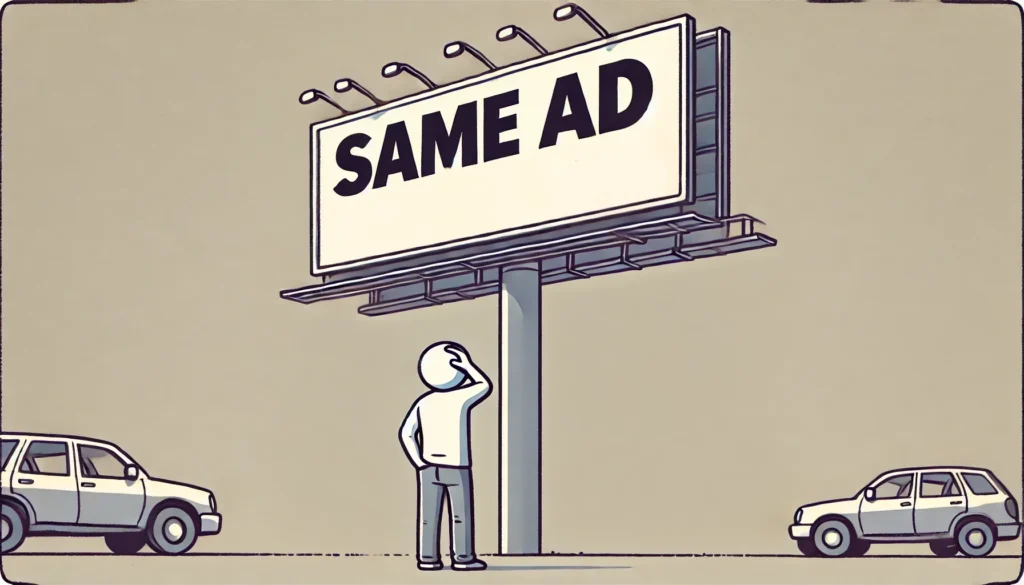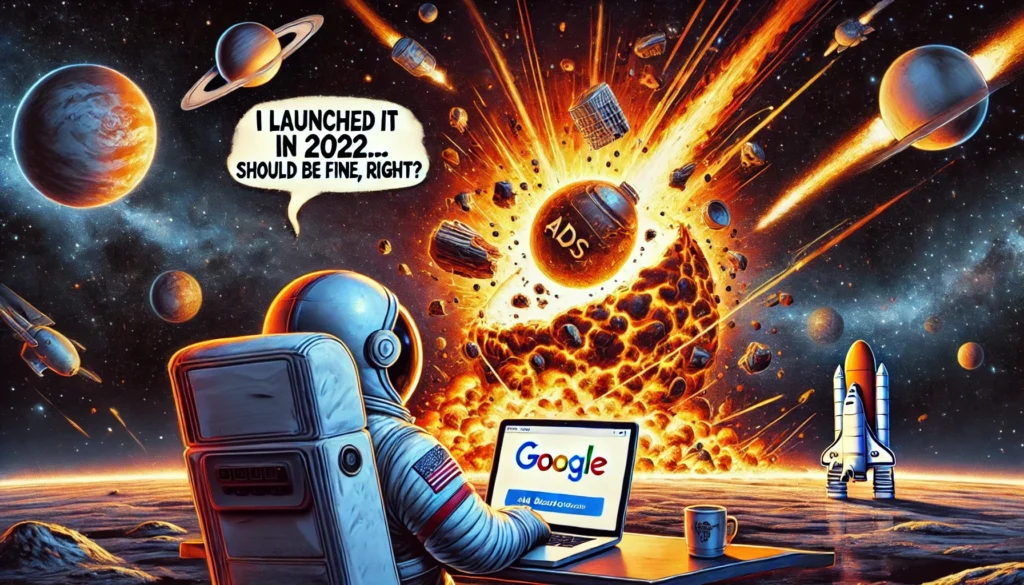Google Ad Accidents Happen
Google Ads continues to be one of the most powerful tools for digital marketers, but as the platform evolves, so do the challenges. In 2025, staying ahead of the curve means avoiding common pitfalls that can waste your budget and hinder your campaign performance.
Think of your digital ad posture like your back – it’s always good to check if it’s in the right shape! Whether you’re a Google Ads expert or starting out, here are the top 10 mistakes to avoid in 2025.
Need help with managing your Google Ads? Look no further and contact our team of professionals today! Feel free to explore our PPC service offerings here, too!
Table of Contents
1. Ignoring AI-Driven Optimisation
In 2025, Google Ads is more reliant on AI and machine learning than ever before. Failing to leverage tools like Smart Bidding, Responsive Search Ads, and Performance Max campaigns can leave you behind. Many advertisers make the mistake of sticking to manual strategies, but embracing AI-driven optimisation is key to staying competitive and also ensuring your budget spend is optimised.
Using AI-driven optimisation has also been shown to improve your costs and overall budget optimisation significantly; according to a study by labsmedia, AI tools boost Google Ads efficiency, reducing costs by up to 50% and increasing conversions by 30%.

2. Neglecting Audience Segmentation
Broad targeting might seem easier, but it’s a sure-fire way to waste ad spend in most cases. In 2025, audience segmentation will be more sophisticated, with options like custom intent audiences, in-market segments, and predictive analytics. Not tailoring your ads to specific audience segments can result in low engagement and poor ROI. Just like a bad fisherman, you’ll be casting a wide net but catching nothing worthwhile—just a lot of wasted bait (or in this case, budget).

3. Overlooking Video Ads on YouTube
In 2025, YouTube will continue to be a dominant platform for video content, making video ads an essential investment—particularly for B2C advertisers. While many businesses still focus primarily on search and display ads, this approach overlooks YouTube’s vast, highly engaged audience. For B2C brands, video ads are no longer optional; they are a powerful tool for capturing consumer attention, driving engagement, and boosting conversions through visually compelling storytelling.
Statistics On Why Video Ads Are Great In 2025
- Consumer Engagement:
- Over 2.5 billion people use YouTube monthly, with 90% of visits from mobile and smartphone devices.
- Your customers are more likely to use YouTube than other channels; for example, 48 minutes is the average daily amount of time U.S. adults spend on YouTube.
- Marketing Effectiveness:
While B2B advertisers can also benefit—particularly for brand-building and lead generation—YouTube is a must-have for B2C businesses looking to stay competitive. Ignoring video advertising means missing out on one of the most effective ways to connect with today’s digital-first and YouTube-addicted consumers.

4. Failing to Optimise for Voice Search
In 2025, Google Ads campaigns that don’t optimise for voice search queries risk losing out on valuable, high-intent traffic. Consumers increasingly use voice commands to search for products and services, and advertisers who fail to adapt will fall behind. Our blog on the future of web development covers this in more depth – check it out here.
Why Voice Search Matters for Google Ads
Increased Voice Search Usage:
- According to a recent study by PWC, three out of every four consumers (74%) are using their mobile voice assistants at home.
- Voice search is growing globally, with around 20.5% of people using voice search.
High Commercial Intent With Voice Searches:
- Over 58% of consumers have used voice search to find local business information in the last year.
- Up to 43% of voice-enabled device owners use their devices to shop.

5. Not Tracking the Right Metrics
Tracking clicks and impressions alone won’t cut it in 2025. Advertisers need to focus on metrics that truly matter, such as conversion rates, cost per acquisition (CPA), and return on ad spend (ROAS). Failing to track the right KPIs can lead to misguided decisions and wasted budgets.
The Best Metrics To Track In Google Ads
Conversion Rates – The percentage of users who take a desired action after clicking an ad (e.g., making a purchase, filling out a form, or booking a demo).
- The average conversion rate across industries is 4.4%, but top-performing advertisers achieve 10% or higher.
- Why It Matters: High click-through rates (CTR) mean little if users aren’t converting. Tracking and optimising conversions leads to higher ROI.
Cost Per Acquisition (CPA) – The average cost to acquire a customer through paid advertising.
- The average CPA in Google Ads varies by industry; according to a US study by WordStream, retail averages $45, and legal services are $80+.
- Why It Matters: A low CPA ensures you acquire customers efficiently without overspending.
Return on Ad Spend (ROAS) – The amount of revenue generated for every £1 spent on advertising.
- A ROAS of 400% (4:1) is considered a good benchmark according to Shopify, meaning £4 is earned for every £1 spent.
- Why It Matters: High ROAS indicates that your ads bring traffic and actual revenue, indicating effective targeting and ad set-up.

6. Ignoring Ad Creative Refresh
In 2025, the phenomenon of ad fatigue—where audiences become desensitised to repetitive advertising—poses a significant challenge for marketers. A recent survey revealed that 61% of participant users are less likely to purchase from companies that display the same ad repeatedly, and 49% have decided against buying a product due to overly repetitive ads.
How To Combat Ad Fatigue
Regular Creative Refreshes:
- Implement a schedule to update your ad creatives periodically. For instance, some brands rotate their creatives every 10.4 days to maintain audience engagement.
A/B Testing:
- Continuously test different ad variations to identify which elements resonate most with your audience. This approach allows for data-driven decisions and helps in optimising ad performance.
Monitor Key Metrics:
- Keep a close eye on click-through rates (CTR) and conversion rates. A decline in these metrics can indicate ad fatigue, signalling the need for a creative update.
7. Overlooking Privacy Regulations
Privacy concerns continue to shape the digital advertising landscape. In 2025, failing to comply with regulations like GDPR, CCPA, and other emerging privacy laws can result in penalties and lost trust. Ensure your campaigns are transparent and respect user privacy to maintain credibility.

8. Not A/B Testing Enough
A/B testing is a cornerstone of successful Google Ads campaigns, yet many advertisers still don’t test enough. In 2025, failing to experiment with different ad formats, landing pages, and targeting options means missing out on opportunities for improvement. Continuously test and refine your campaigns to maximise performance.
The Benefits Of A/B Testing In 2025
Optimising Ad Performance:
A/B testing allows advertisers to experiment with different components of their ads, such as headlines, ad copy, images, and calls-to-action (CTAs). This process helps in identifying which variations drive higher engagement and conversions.
Improving Conversion Rates
By testing different landing page designs, content layouts, form placements, and CTAs, businesses can determine which configurations lead to higher conversions. This understanding enables the refinement of landing pages to encourage more visitors to take desired actions.

9. Underutilising Google Automation
Google Ads offers a range of automation tools, from automated rules to smart campaigns. In 2025, underutilising these tools can put you at a disadvantage. Automation can save time, reduce errors, and improve efficiency, so don’t shy away from using it to your advantage.
10. Setting and Forgetting
One of the biggest mistakes in Google’s ad strategy, which is still relevant in 202,5, is treating Google Ads as a “set it and forget it” platform. The digital landscape constantly changes, and campaigns require ongoing monitoring and optimisation. Regularly review your performance, adjust your strategy, and stay updated on new features and trends.
With over 8.5 billion searches per day on Google, competition is fiercer than ever. Studies (and our own work) show that advertisers who optimise their campaigns regularly can achieve greater returns, far outweighing the cost of Google Advertising.
So, unless you are a fan of donating your ad budget to Google! Keep an eye on your campaign performance, tweak your strategy, and stay updated on the latest features. Google processes thousands of search queries every second, so if you’re not optimising, you’re playing darts blindfolded.

Final Thoughts
Google Ads in 2025 is more dynamic and competitive than ever. By avoiding these common mistakes, you can ensure your campaigns are effective, efficient, and future-proof. Stay proactive, embrace new technologies, and always keep your audience at the centre of your strategy. Happy advertising!
What Google Ads mistakes have you encountered? Let us know and we will conduct a free of charge audit of your Google Ads Property!
